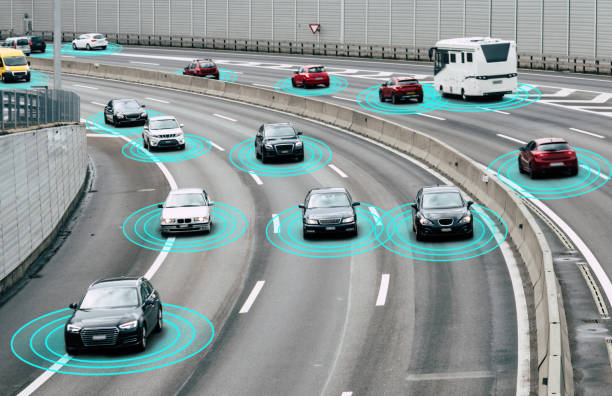Virginia’s Continuous Flow Intersection and the 2014 Hummer: An In-Depth Overview
Introduction
In the world of transportation and infrastructure, innovation is key to managing increasing traffic volumes while ensuring safety and efficiency. Continuous Flow Intersections (CFIs) represent one such innovation, designed to alleviate congestion and improve the flow of vehicles. In Virginia, the adoption of CFIs has played a pivotal role in managing urban traffic. At the same time, vehicles like the 2014 Hummer have maintained a distinctive place in the automotive market, known for their size, durability, and performance. This article explores the concept of CFIs in Virginia and how the presence of vehicles like the 2014 Hummer impacts traffic flow and road design.
What Is a Continuous Flow Intersection (CFI)?
A Continuous Flow Intersection, also known as a Displaced Left-Turn (DLT) intersection, is designed to allow left-turning vehicles to cross opposing traffic lanes prior to the main intersection. This design aims to eliminate the need for a dedicated left-turn signal phase, thereby improving overall intersection efficiency and reducing delays.
CFIs are particularly effective in areas with high traffic volumes, as they streamline the movement of vehicles through intersections. In Virginia, several CFIs have been constructed to manage congestion, reduce travel times, and enhance the overall safety of roadways. The concept has been adopted in urban areas where traditional intersections often face significant delays during peak hours.
How CFIs Work: A Closer Look
At a typical intersection, vehicles turning left must wait for a green arrow, which can cause delays, especially when traffic volumes are high. In a Continuous Flow Intersection, left-turning vehicles are directed into a left-turn lane that crosses over the opposite lanes of traffic before reaching the main intersection. When the vehicles reach the primary intersection, they proceed straight through, effectively bypassing the need for a separate left-turn phase.
This design allows for the simultaneous movement of left-turning and through traffic, significantly reducing the cycle time of traffic signals. By eliminating the extra step of waiting for a left-turn signal, CFIs increase the capacity of intersections, making them more efficient.
Virginia’s Adoption of CFIs: A Step Towards Improved Traffic Management
Virginia has been at the forefront of adopting innovative traffic solutions like CFIs to address the challenges of growing urbanization. As the state’s population and vehicle ownership continue to rise, so do the demands on its transportation infrastructure. Continuous Flow Intersections have proven to be an effective solution in managing heavy traffic at key intersections.
One notable example is the implementation of CFIs along U.S. Route 29 in Albemarle County, near Charlottesville. This particular CFI was constructed to address chronic congestion issues that had plagued the area for years. Since its completion, the intersection has seen a significant improvement in traffic flow, reducing delays and improving travel times for motorists.
The Virginia Department of Transportation (VDOT) has highlighted CFIs as part of a broader effort to adopt innovative intersection designs. These efforts include the construction of roundabouts, diverging diamond interchanges (DDIs), and other modern traffic management solutions. The success of CFIs in Virginia has encouraged their consideration in other areas facing similar traffic challenges.
The Role of Vehicles Like the 2014 Hummer in Modern Traffic
The 2014 Hummer is a vehicle that stands out due to its size, power, and off-road capabilities. Originally designed for military use, the Hummer’s civilian version has become a symbol of ruggedness and strength. The 2014 Hummer model, while no longer in production, remains a popular choice among enthusiasts who appreciate its durability and distinctive design.
The presence of vehicles like the 2014 Hummer in Virginia’s traffic landscape poses unique challenges and considerations. Due to their larger size and weight, Hummers require more space when maneuvering through intersections, particularly those with tight turning radii. This can be a point of consideration when designing CFIs and other intersection types to ensure they accommodate larger vehicles without compromising the efficiency of the intersection.
How CFIs and Large Vehicles Coexist
When designing a CFI, engineers must consider the range of vehicles that will navigate the intersection, including large trucks and SUVs like the 2014 Hummer. These considerations include the width of lanes, turning radii, and the structural integrity of road surfaces, which need to withstand the weight of heavier vehicles.
The design of CFIs is generally robust enough to handle large vehicles, thanks to the elimination of sharp turns within the main intersection area. This design helps maintain a smooth flow even when larger vehicles are present. For example, in Virginia, the CFIs built on U.S. Route 29 were specifically engineered to accommodate a wide range of vehicle sizes, ensuring that traffic flows smoothly, whether it’s a compact sedan or a full-size SUV like the Hummer.
Environmental Considerations: CFIs and the 2014 Hummer
While CFIs focus on improving traffic flow, reducing delays, and minimizing emissions by decreasing idling time, the environmental impact of larger vehicles like the 2014 Hummer remains a concern. The Hummer, known for its robust build, tends to have lower fuel efficiency compared to smaller, more eco-friendly vehicles. This contrast highlights the need for a balance between infrastructure improvements and the types of vehicles on the road.
Virginia’s focus on CFIs as a traffic solution aligns with broader efforts to reduce emissions and improve air quality. By streamlining traffic flow, CFIs help to reduce the overall time vehicles spend idling at intersections, which can have a positive impact on fuel consumption and emissions. However, the efficiency gains of CFIs must be balanced against the fuel demands of larger vehicles like the Hummer.
Safety Impacts of CFIs and Large Vehicles
Safety is a primary concern when implementing any new traffic management solution. CFIs are designed with safety in mind, as they reduce the number of conflict points at intersections. Traditional intersections have multiple points where vehicles can potentially collide, such as left-turning vehicles crossing paths with oncoming traffic. By relocating left turns, CFIs reduce these conflict points, making intersections safer.
For larger vehicles like the 2014 Hummer, safety considerations include the vehicle’s visibility, maneuverability, and braking distance. The CFI design’s smoother traffic flow can benefit larger vehicles, as it reduces the need for sudden stops and starts. This is particularly advantageous for vehicles like the Hummer, which have a longer braking distance compared to smaller cars.
Public Reception and Criticisms of CFIs in Virginia
The introduction of CFIs in Virginia has not been without its challenges. While the design offers clear benefits in terms of traffic flow, some drivers have found the layout of CFIs confusing, particularly during the initial period after a CFI opens. Navigating a displaced left turn can be unfamiliar to drivers accustomed to traditional intersection designs.
To address this, VDOT has invested in public awareness campaigns to educate drivers about how to use CFIs safely and efficiently. These efforts include informational videos, road signage, and community outreach programs. Despite the learning curve, many drivers have come to appreciate the reduced travel times and smoother traffic flow that CFIs provide.
The Future of CFIs and Large Vehicles in Virginia
As Virginia continues to grow, the need for effective traffic management solutions like CFIs will become increasingly important. CFIs represent a forward-thinking approach to managing congestion in high-traffic areas, and their success could pave the way for more widespread adoption across the state.
At the same time, the presence of larger vehicles like the 2014 Hummer underscores the importance of designing infrastructure that accommodates a diverse range of vehicle types. As automotive technology advances, including the development of electric and hybrid vehicles, future intersections may need to integrate additional features to support these trends.
Conclusion
Virginia’s adoption of Continuous Flow Intersections demonstrates a commitment to innovative solutions for traffic management. CFIs have proven to be an effective tool in reducing congestion, improving safety, and enhancing the overall driving experience for residents. The 2014 Hummer, with its unique presence on the road, highlights the diverse range of vehicles that Virginia’s infrastructure must support. While CFIs and large vehicles present different challenges, their coexistence illustrates the dynamic nature of modern traffic systems.
As Virginia continues to evolve, the lessons learned from CFIs and the integration of diverse vehicle types will inform future developments in transportation infrastructure. By prioritizing efficiency and safety, Virginia can ensure that its roadways remain capable of meeting the needs of all drivers, whether they are behind the wheel of a compact sedan or a 2014 Hummer.
7 Frequently Asked Questions (FAQs)
- What is a Continuous Flow Intersection (CFI)?
- A CFI is a type of intersection that moves left-turning traffic across opposing lanes before the main intersection, reducing the need for a separate left-turn signal phase and improving traffic flow.
- Why are CFIs being implemented in Virginia?
- Virginia has adopted CFIs to manage congestion, improve travel times, and enhance safety at busy intersections, especially in rapidly urbanizing areas.
- How does a CFI improve traffic flow?
- CFIs eliminate the need for a dedicated left-turn signal, allowing left-turning vehicles to move through the intersection simultaneously with through traffic, which reduces overall delays.
- Can large vehicles like the 2014 Hummer navigate CFIs easily?
- Yes, CFIs are designed to accommodate a variety of vehicle sizes, including larger SUVs and trucks like the 2014 Hummer, ensuring that all vehicles can navigate the intersection smoothly.
- Are CFIs safer than traditional intersections?
- CFIs can be safer as they reduce the number of conflict points, particularly those associated with left-turn movements, which are common sites for accidents in traditional intersections.
- What are the environmental benefits of CFIs?
- CFIs help reduce idling time at intersections, which can lower fuel consumption and decrease vehicle emissions, contributing to improved air quality.




